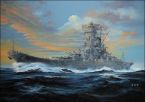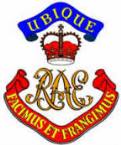Alfred
Posts: 6685
Joined: 9/28/2006
Status: offline

|
quote:
ORIGINAL: Lowpe
quote:
ORIGINAL: Alfred
Changing the threat tolerance level to "Low" is more hopeful. Of no real value if Historical" start is in play, so in this case if you are allowed to do so, changing the level has a small chance of saving Force Z.
Alfred
+1!
Big believer in low threat tolerance setting. I plan on making liberal use of "low" threat tolerance, especially in the early days when most night experience is in the 30s and 40s.
I have played around with creating training task forces, with a high leadership task force commander to increase experience gain, patrol orders, but without combat it seems not much more effective than just creating a task force and letting it sit in a hex.
I am looking to prioritize gaining night experience, so my primary SAG usage will be with that in mind, looking to ambush convoys, night bombardments (which isn't nearly as effective as surface combat in raising experience), and if I find IJN SAG I hope the low threat tolerance will cause them to runaway very quickly, and not get into drawn out slugfests where the IJN enjoys a 30 point experience advantage.
Extreme care will be taken with the Iboat horde around Pearl. The best ASW ship at Pearl is the long legged Taney. But her experience at night is in the 20's!. We have got some serious training to do to get these rookies up to speed.
Two things to point out.
1. The threat tolerance level primarily refers to the threat posed by enemy aircraft. Set to "Low" instructs the TF to avoid venturing into any territory where there is an enemy air presence. The enemy air need not be dominant. Of course, the traits of the TF leader can, to a certain extent, negate the setting in part or in full. A meek and mild mannered TF leader, one with a low Aggression rating, is much more likely to follow orders and not enter enemy air space. Never, ever, appoint Halsey to a TF with a Low" level threat setting.
Even with a Low setting, a TF led by a meek and mild mannered leader may move into enemy air space because it doesn't know enemy air is in the area. Or the only way home is through transiting the least enemy air controlled air space. Hence just as important as the leader is having a high MDL in the area of likely operations.
The threat tolerance level doesn't really apply to deciding to attempt to decline battle when TFs bump into each other. Then the TF leader traits are the main factor in play in assessing the known relevant data to decide whether to decline or accept combat.
2. Shakedown cruises have different experience caps for ships based on type. TF leadership is irrelevant. It is a question of time spent at sea. Once the cap is reached, only engagement in actual combat will raise the ship's experience level. A ship which is in a TF which is involved in combat but it itself does not fire or is fired upon in that combat, does not increase it's experience level. This is why a Bombardment TF is not as efficacious as a Surface Combat TF in raising ship experience levels as generally speaking fewer ships in a Bombardment TF receive actual return fire than do ships in a Surface Combat TF.
Alfred
|
 Printable Version
Printable Version
















 There is a narrow area where portions of the KB can strike. A potential counter is to do night naval search and patrol where I think the Carriers might show up hunting POW and hoping to the rng gods for a night encounter.
There is a narrow area where portions of the KB can strike. A potential counter is to do night naval search and patrol where I think the Carriers might show up hunting POW and hoping to the rng gods for a night encounter. 
 Not to mention all the funny dual locations, Batan/Bataan, Christmas Island x2, etc. etc.
Not to mention all the funny dual locations, Batan/Bataan, Christmas Island x2, etc. etc.  New Messages
New Messages No New Messages
No New Messages Hot Topic w/ New Messages
Hot Topic w/ New Messages Hot Topic w/o New Messages
Hot Topic w/o New Messages Locked w/ New Messages
Locked w/ New Messages Locked w/o New Messages
Locked w/o New Messages Post New Thread
Post New Thread